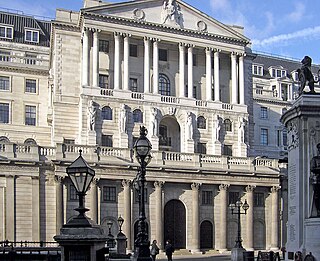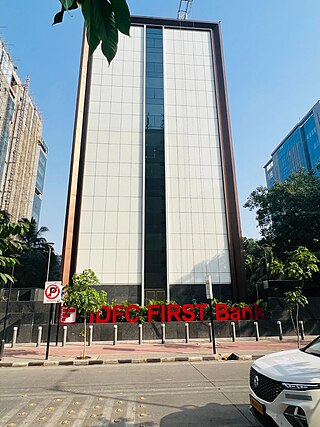
The economy of Tajikistan is dependent upon agriculture and services. Since independence, Tajikistan has gradually followed the path of transition economy, reforming its economic policies. With foreign revenue precariously dependent upon exports of cotton and aluminium, the economy is highly vulnerable to external shocks. Tajikistan's economy also incorporates a massive black market, primarily focused on the drug trade with Afghanistan. Heroin trafficking in Tajikistan is estimated to be equivalent to 30-50% of national GDP as of 2012.

Microfinance is a category of financial services targeting individuals and small businesses who lack access to conventional banking and related services. Microfinance includes microcredit, the provision of small loans to poor clients; savings and checking accounts; microinsurance; and payment systems, among other services. Microfinance services are designed to reach excluded customers, usually poorer population segments, possibly socially marginalized, or geographically more isolated, and to help them become self-sufficient. ID Ghana is an example of a microfinance institution.

The Bank of China is a Chinese majority state-owned commercial bank headquartered in Beijing and the tenth largest bank in the world.

Bank of Baroda is an Indian public sector bank headquartered in Vadodara, Gujarat. It is the second largest public sector bank in India after State Bank of India, with 153 million customers, a total business of US$218 billion, and a global presence of 100 overseas offices. Based on 2023 data, it is ranked 586 on the Forbes Global 2000 list.
GE Capital is the financial services division of General Electric.
A micro-enterprise is generally defined as a small business employing nine people or fewer, and having a balance sheet or turnover less than a certain amount. The terms microenterprise and microbusiness have the same meaning, though traditionally when referring to a small business financed by microcredit the term microenterprise is often used. Similarly, when referring to a small, usually legal business that is not financed by microcredit, the term microbusiness is often used. Internationally, most microenterprises are family businesses employing one or two persons. Most microenterprise owners are primarily interested in earning a living to support themselves and their families. They only grow the business when something in their lives changes and they need to generate a larger income. According to information found on the Census.gov website, microenterprises make up 95% of the 28 million US companies tracked by the census.
China Banking Corporation, commonly known as Chinabank, is a Filipino bank established in 1920. It was the first privately owned local commercial bank in the Philippines initially catering to the banking needs of Chinese Filipino entrepreneurs. The bank offers a wide range of banking services, including deposits, investments, trust, cash management, remittance, and loans. It also offers insurance brokerage, stock brokerage, and bancassurance services through its subsidiaries and affiliate.

Cooperative banking is retail and commercial banking organized on a cooperative basis. Cooperative banking institutions take deposits and lend money in most parts of the world.

LAPO is a Nigerian organisation with a microfinance bank dedicated to self-employment through microfinance and an NGO, a non-governmental, non-profit community development organization focused on the empowerment of the poor and the vulnerable.
Axis Bank Limited, formerly known as UTI Bank (1993–2007), is an Indian banking and financial services company headquartered in Mumbai, Maharashtra. It is India's third largest private sector bank by assets and Fourth largest by Market capitalisation.It sells financial services to large and mid-size companies, SMEs and retail businesses.

Following the Iranian Revolution, Iran's banking system was transformed to be run on an Islamic interest-free basis. As of 2010 there were seven large government-run commercial banks. As of March 2014, Iran's banking assets made up over a third of the estimated total of Islamic banking assets globally. They totaled 17,344 trillion rials, or US$523 billion at the free market exchange rate, using central bank data, according to Reuters.

Zopa Ltd. is a British financial services company which offers deposit accounts, personal loans and credit cards. It began as the world's first peer-to-peer lending company in 2005 and gained a full banking licence in 2020. The peer-to-peer side of its business closed in December 2021.
Financial inclusion is the availability and equality of opportunities to access financial services. It refers to a process by which individuals and businesses can access appropriate, affordable, and timely financial products and services which include banking, loan, equity, and insurance products.It is a path to enhance inclusiveness in economic growth by enabling the unbanked population to access the means for savings, investment, and insurance towards improving household income and reducing income inequality

A bank is a financial institution that accepts deposits from the public and creates a demand deposit while simultaneously making loans. Lending activities can be directly performed by the bank or indirectly through capital markets.

Silicon Valley Bank (SVB) is a commercial bank division of First Citizens BancShares. The bank was previously the primary subsidiary of SVB Financial Group, a publicly traded bank holding company that had offices in 15 U.S. states and over a dozen international jurisdictions.
Capital Bank was an indigenous private national development and commercial Ghanaian bank. It was one of the private national development and commercial banks licensed by Bank of Ghana, the national banking regulator. On August 14, 2017, the Bank of Ghana announced it had revoked its license due to insolvency during Ghana's banking crisis. The bank was then taken over by GCB Bank. The founder of the bank, William Ato Essien and three others were subsequently charged with misappropriating 100 million Ghana Cedis of the Bank's assets.
Small finance banks (SFB) are a type of niche banks in India. Banks with a SFB license can provide basic banking service of acceptance of deposits and lending. The aim behind these is to provide financial inclusion to sections of the economy not being served by other banks, such as small business units, small and marginal farmers, micro and small industries and unorganised sector entities.

IDFC FIRST Bank is an Indian private sector bank formed by the merger of the banking arm of Infrastructure Development Finance Company and Capital First, an Indian non-bank financial institution.
Tajikistan did not join in the World Bank until 1993. Before the collapse of USSR in 1991, Tajikistan was experiencing planned economy which was dominated by Moscow. Right after the dissolution, different from other nations which experienced a relatively stable transition from planned economy to market economy, Tajikistan fell into a serious civil war. As a result, the first mission after Tajikistan became the official member of the World Bank, was to recover its economy from bullets and blood. In 1997. $10 million credit was grant for Post-Conflict Rehabilitation Project. The proposed credit was used to conduct necessary imports and to restore production. Under different time periods, the World Bank and Tajikistan worked together in response to various problems. Later on, the economic crisis of 2008 caused the inflation of food prices in Tajikistan. In response to the crisis, the World Bank issued $6.25 million for the Emergency Food Security and Seed Imports Project in order to help at least 28000 households to release the food price pressure. Coming into the 21st century, Tajikistan received financing from IDA and IBRD of the World Bank with respect to programs of healthcare, education, irrigation and agriculture. Over the past years, Tajikistan has received over 130 projects of which 17 are active and a total of over $1.4 billion from the World Bank. With the help of those projects, from 2000 to 2017, the poverty rate in Tajikistan had been decreased from 83% to 29.5%. Besides, current GDP growth rate in Tajikistan is around 7%. Nevertheless, with a stable GDP growth rate, Tajikistan is still one of the poorest countries in Central Asia.











